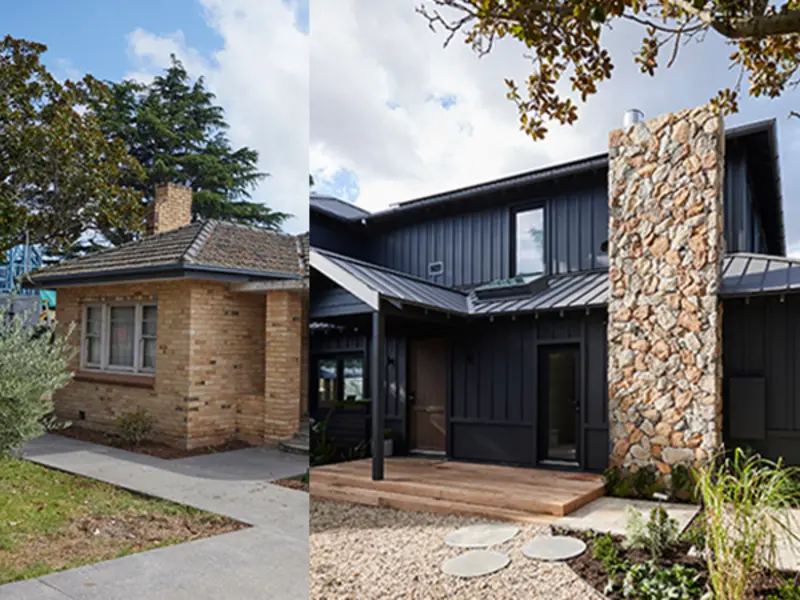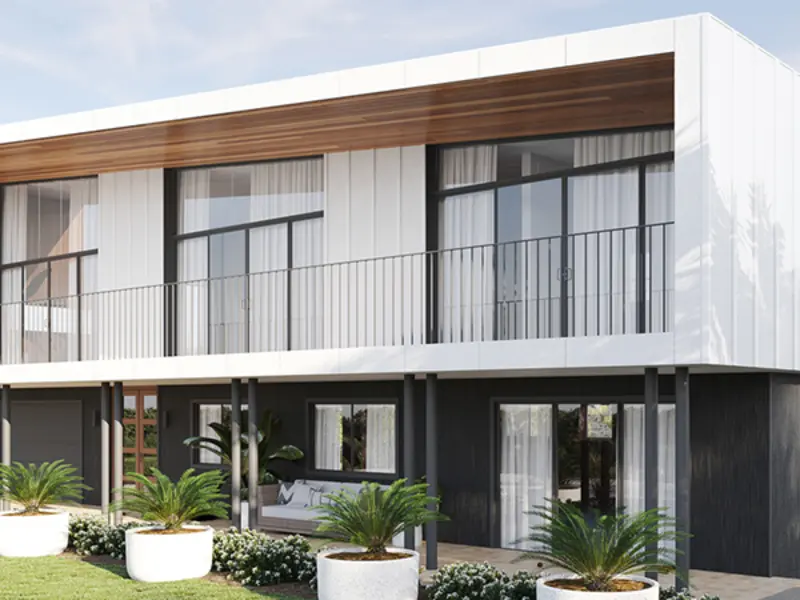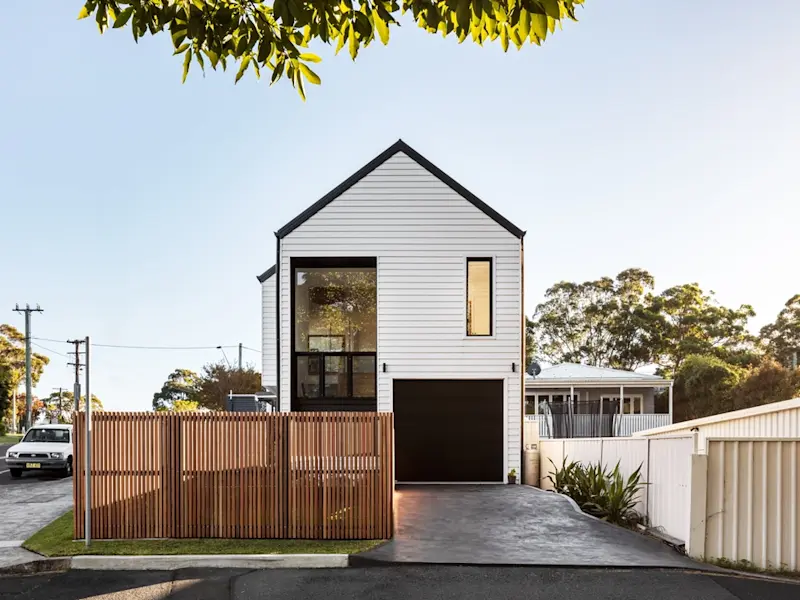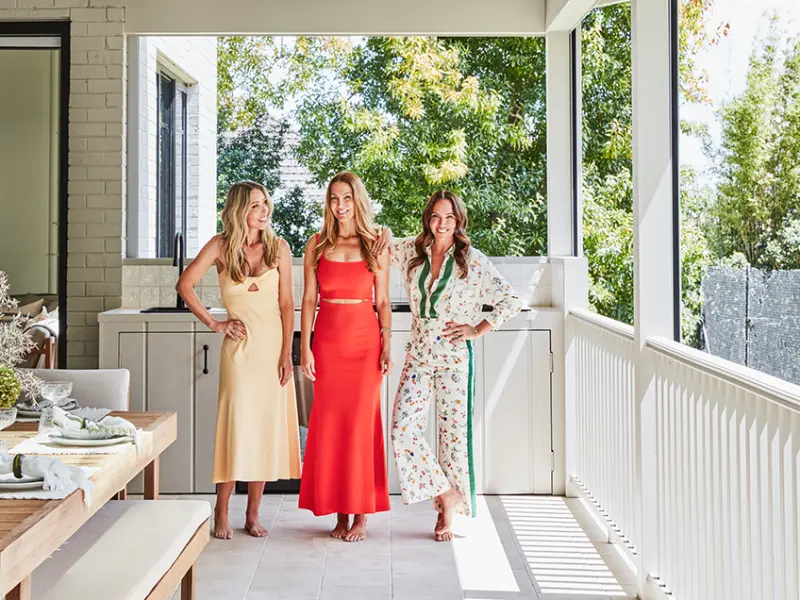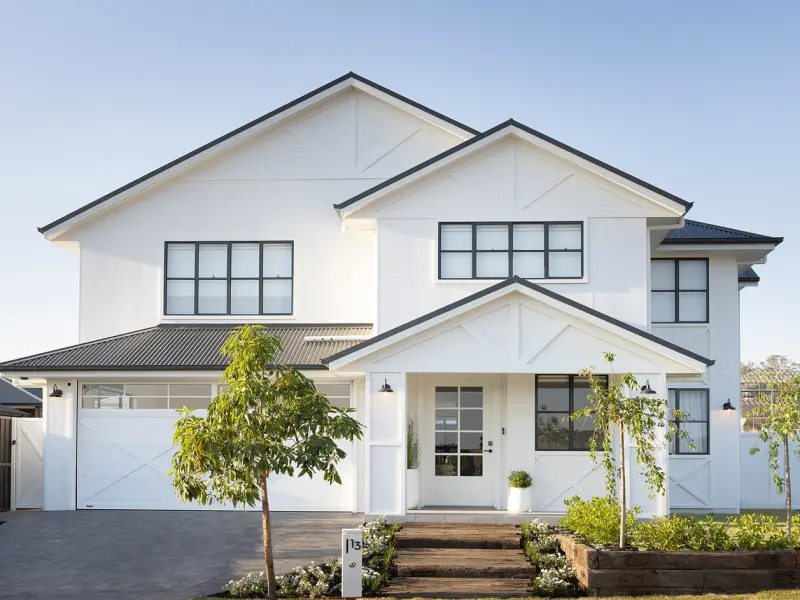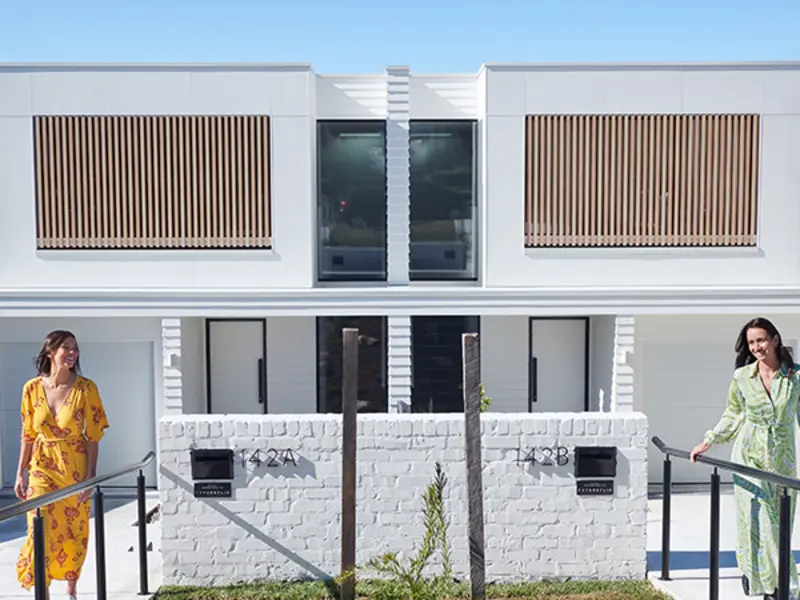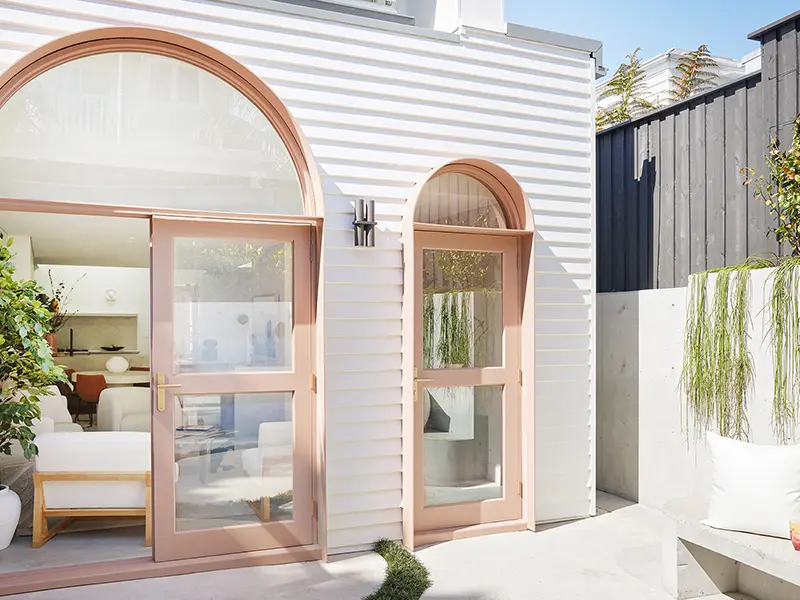
Hot home trend with Neale Whitaker: The black exterior
Black can make for a striking exterior colour choice. While it might seem a dramatic design decision, there is no doubt black brings a sense of drama and luxury, it pops against foliage with its contrast in tones and will make your house stand out from others in the street.
Before you take the plunge and paint your house a shade of black, we’ve compiled a few pointers you may want to consider first.

Reasons to choose black
Like white and grey, black is a neutral colour. Neutral colours are generally easy on the eyes since they don't actually have any colour and because of this, are an ideal option for home exteriors as they’re the perfect blank canvas. Apart from being a versatile colour that basically goes with anything, other reasons you might choose black include:
Contrasts well with other materials, hues, and textures such as Hardie™ cladding products
Creates a bold statement and does not need much to dress it up
Works well with most architectural styles and landscapes, although lends itself best to modern designs
It will make the lines of your home the hero, the angles become crisper and the architectural details more visible.
Considering undertones and light
You might think all blacks are the same? Not true. Blacks come in various hues with subtle nuances that will impact the end result and finding the right shade of black for your cladding is all about considering undertones and light.
Katherine Champion, colour consultant for Wattyl, suggests becoming familiar with the undertones in the paint colour you’re considering, and getting comfortable with identifying them will help you make the right choice for your home. It’s easy to identify a paint colour’s mass tone as it’s the first colour you typically see when looking at a paint swatch, yet, the undertone is the underlying or hint of colour that peeks through and can vary from red, brown, blue, purple and green.
With black being neutral, it can work with nearly all building types. Cooler hues of black work best on homes in environments surrounded by natural bush landscapes, while saturated black is better suited to modern architecture in urban settings.

Compare, compare, compare
A good rule of thumb to ensure you pick the right colour is to compare, compare, compare. Some steps you might like to follow include:
Check the lighting, direct sun will pull out about 30% of the colour making it appear lighter or washed out, so look at your colour brochure or cards outside
Buy test pots to paint large swatches directly onto the surface of your exterior
To check the undertone, line a colour swatch up against a pure white piece of paper
Consider the fixed materials around the exterior cladding to be painted, including the surrounding landscape
Look at the colour during different times of the day and weather conditions, to see how both light and your home’s natural surroundings impact the colours you are considering.
An easy way to test your colour is to order a Hardie™ fibre cement product sample and use this as your paint swatch in order to visualise the finished look of your home.
Order a Sample
Ready to specify Hardie™ fibre cement products in your next project? Order a sample to help visualise your design decision. Paint samples in any colour to suit the vision you have for your dream home.
Spectrum from warm to cool
There is an infinite number of variations on the shade of black, depending on the undertone they can appear anywhere on the spectrum from warm to cool.
"As an alternative to black, dark greys and charcoals such as Wattyl Ember suit many different styles from Hamptons through to contemporary, they give grounding and offer tonal depth and contrast, a softer look and feel. They also provide the perfect backdrop for greenery," says Katherine.
Popular Wattyl blacks include:

Light can make all the difference
Paint colours all have a light reflective value (LRV) which indicates the amount of light a colour reflects. Dark surfaces absorb a lot of light plus heat and have a low LRV, for instance pure black has an LRV of 0 per cent with other shades of black anywhere from 0 up to 10 percent.
If you are selecting a darker colour for your exterior cladding, it’s important to consider the LRV requirements and environment of where your home is located.
The perfect paint finish
Painting your home’s exterior is not a small undertaking and it’s crucial you consider a high-quality paint, particularly if you are looking at a shade of black to ensure it meets the needs of Australia’s harsh weather conditions.

What to consider in the perfect paint finish:
The sheen of a paint refers to how much light is reflected from a surface. Selecting the right sheen level depends on the surface you are painting and the desired effect.
James Hardie recommends using low sheen paints on exteriors as they are the most durable finish and offer the best coverage for large surface areas.
Low sheen is the ideal option for cladding or render walls due to the low-reflective finish which hides imperfections and is easy to clean.
Other paint finishes include: matte which has the lowest light reflection with a slightly chalky finish that helps to hide imperfections, however, not always suitable for exteriors as more difficult to clean; gloss paints (semi and full gloss) are usually reserved for areas that you would like to highlight such as window, roof and door trims, however, whilst they can make colours look richer, they can also show up imperfections due to shine, so are best used on smaller surface areas.
Black can be used to highlight other colours making them appear more luminous in comparison. It can be used to define specific areas of your home as it can recede or create voids and in contrast create accents, the right finish can also be used to emphasise texture, an ideal pairing for the smooth, natural sand texture of Hardie™ Fine Texture Cladding.
Finding inspiration from an expert
Television personality and style aficionado, Neale Whitaker’s recent guest house build on the south-coast of New South Wales, perfectly showcases how stunning a black façade can be. “We knew black was the colour for our barn-style guest house from the beginning. Black buildings tend to disappear into the greater landscape, yet with our own farmhouse being white, we loved the idea of a contrast. The black is quite sensorial and depending on the day it throws incredible light and shadows that creates interest.”

Neale chose Stria™ Cladding by James Hardie for the exterior of the guest house. Being a fibre cement product, Stria™ Cladding is durable and adheres to Bushfire Attack Level (BAL) requirements which is essential with the property being surrounded by bushland. Neale was looking to achieve a specific aesthetic in the choice of cladding, the shiplap panels of Stria™ Cladding provide the horizontal lines expected of a barn-style build. Stria™ cladding panels come primed, are able to withstand harsh weather conditions and are resistant to warping even when painted in dark colours.
“Considering the colour palette surrounding a black façade is a key step in achieving the right look for your home,” says Neale. “Knowing that black can be a harsh colour on its own, we introduced a mix of warmer browns and greens to the palette through the use of brick, timber and foliage, to soften the look.”

Incorporated into the exterior landscape design of the guest house is a mix of raw materials including herringbone laid worn brick pavers in a warm brown tone, olive trees in planters that contrast well against the Stria™ Cladding painted in Colorbond® steel Nightsky® in Wattyl Solagard.

